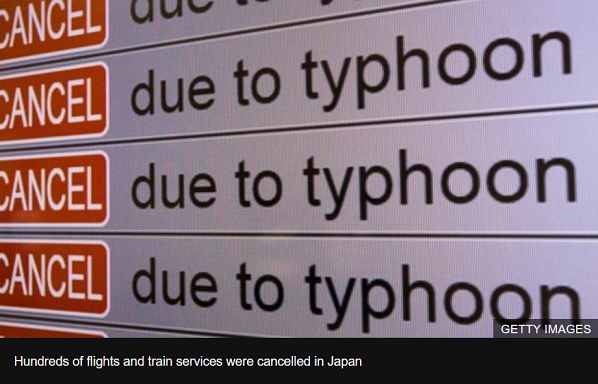
Typhoon Haishen is making its way towards South Korea after slamming through southern Japan.
The storm is headed towards Busan, South Korea's second-largest city, said the country's weather agency.
More than 300 flights from 10 airports were cancelled, with some train services suspended.
The typhoon caused a loss of power across hundreds of thousands of homes in Japan, though initial assessments suggest it did less damage than feared.
Thirty-two people were injured, including four who sustained cuts after the glass windows of an evacuation centre were blown in, according to Japanese broadcaster NHK.
Some eight million people in Japan had been asked to evacuate in the path of the storm.
The storm comes days after Maysak, one of the region's strongest typhoons in years, slammed into the Korean peninsula and Japan last week.
How has South Korea been impacted?
High winds have already cut power to almost 5,000 households on the southern tip of the Korean peninsula, including the resort island of Jeju, says a Reuters report.

A typhoon alert has been issued for Jeju and other southern parts of South Korea like Gyeongsang province.
But a KMA official told Yonhap News that it was likely the typhoon would weaken as it passed by.
South Korea's Korea Forest Service had earlier raised the landslide alert to its highest level.

